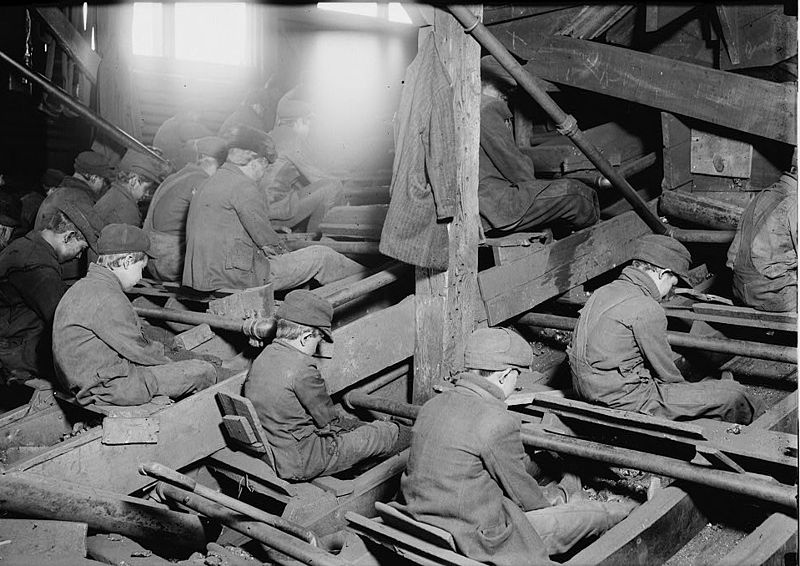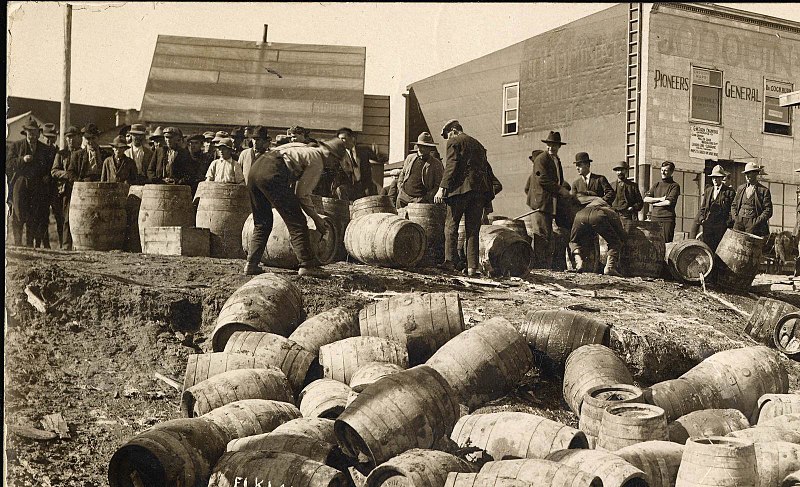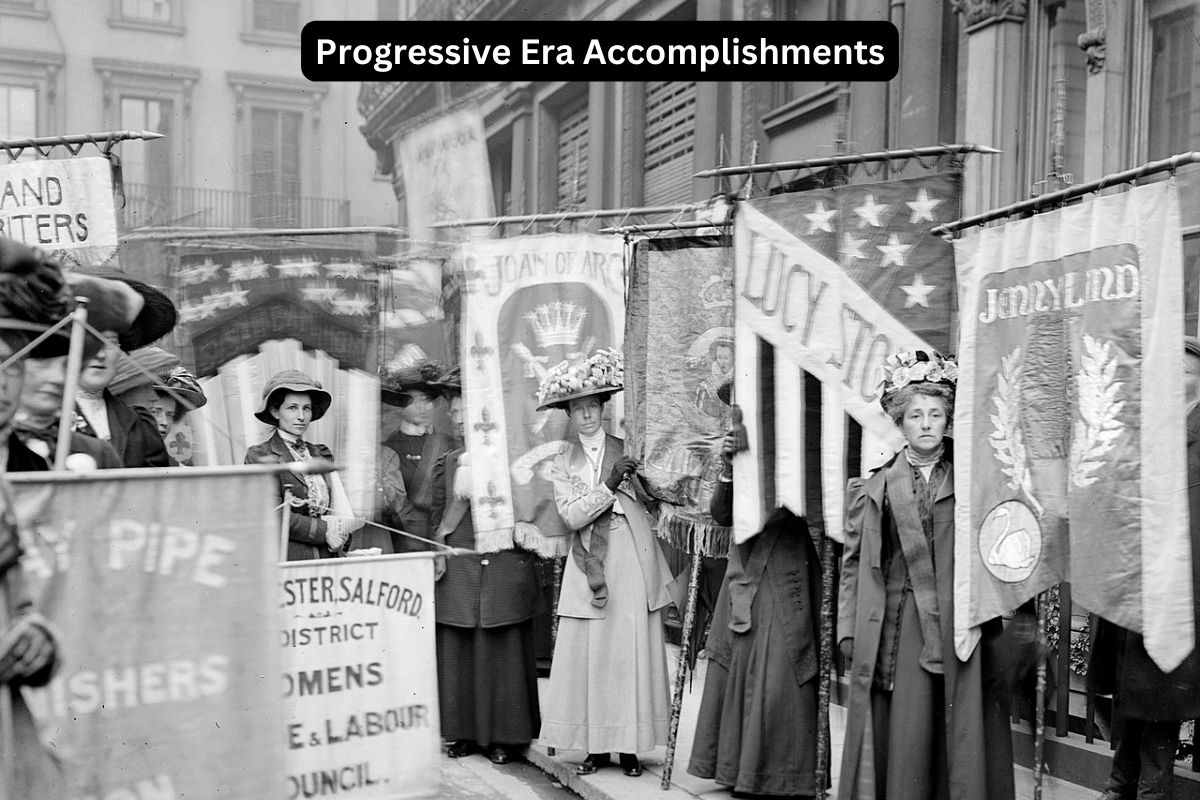The Progressive Era in the United States, spanning roughly from the late 19th century to the early 20th century, was a period of significant social, political, and economic reform.
During this time, reformers and activists worked tirelessly to address a wide range of societal challenges and injustices. These efforts resulted in numerous accomplishments and policy changes that continue to shape American society to this day.
In this context, we will explore some key achievements of the Progressive Era, each contributing to the era’s legacy of progress and reform.
Accomplishments of the Progressive Era
1. Regulation of Big Business
During the Progressive Era, there was growing concern about the power and influence of large corporations and trusts.
Also Read: Facts About the Progressive Era
Progressives believed that these entities were often engaging in unfair business practices that harmed consumers and stifled competition. To address this issue, several important measures were taken:
- Sherman Antitrust Act (1890): This federal law was one of the earliest attempts to curb monopolistic practices. It prohibited anticompetitive agreements and the abuse of monopoly power.
- Clayton Antitrust Act (1914): This legislation strengthened antitrust laws, making it even more difficult for corporations to engage in anticompetitive behavior. It also clarified certain practices as illegal, such as price discrimination.
2. Labor Reforms
The Progressive Era saw significant improvements in labor conditions and workers’ rights. Labor unions and progressive activists played a crucial role in pushing for these reforms:
- Minimum Wage Laws: Some states implemented laws that set minimum wages for certain industries or occupations, ensuring that workers received fair compensation for their labor.
- Limitations on Child Labor: Progressive-era reforms led to stricter regulations on child labor, prohibiting children from working in dangerous or exploitative conditions and ensuring they received an education.

3. Women’s Suffrage
One of the most notable achievements of the Progressive Era was the advancement of women’s suffrage, which granted women the right to vote. This accomplishment was the result of tireless activism and advocacy by suffragists and women’s rights activists.
Also Read: Timeline of the Progressive Era
The 19th Amendment to the U.S. Constitution, also known as the Susan B. Anthony Amendment, was ratified, guaranteeing American women the right to vote. This marked a significant milestone in the broader struggle for gender equality.
4. Direct Primary Elections
Progressive reformers sought to make the political process more democratic and transparent by introducing direct primary elections.
These reforms aimed to reduce the influence of party bosses and machine politics. Key points include:
- Direct Primaries: In a direct primary election, registered voters choose their party’s candidates for various offices directly, rather than having those candidates selected by party leaders. This allowed for a more direct voice for citizens in the candidate selection process.
- Open vs. Closed Primaries: Some states adopted open primaries, where any registered voter could participate in any party’s primary, while others had closed primaries, limiting participation to members of the respective political parties.

5. Consumer Protection Laws
Progressive-era reforms included several important measures to protect consumers from unsafe products, fraudulent advertising, and other business practices that put consumers at risk:
- Pure Food and Drug Act (1906): This landmark legislation aimed to ensure the safety and purity of food and drugs sold to the public. It led to the creation of the Food and Drug Administration (FDA) and mandated accurate labeling of products.
- Meat Inspection Act (1906): This act aimed to improve the safety and quality of meat products by establishing federal meat inspection standards and oversight.
6. Conservation of Natural Resources
Progressive leaders recognized the need to preserve and responsibly manage the country’s natural resources, as industrialization and westward expansion were taking a toll on the environment.
National Parks: President Theodore Roosevelt, a prominent Progressive, expanded the national park system. He designated numerous national parks and monuments, protecting vast areas of pristine wilderness for future generations.
National Forests: Roosevelt also played a pivotal role in the creation of national forests, ensuring sustainable logging and resource management.
7. Municipal Reforms
Progressive reforms extended to the local level, with efforts aimed at improving city government and reducing corruption.
Some cities adopted a commission system of government, where elected commissioners were responsible for specific aspects of municipal administration, such as public safety or public works. This system aimed to increase efficiency and reduce political patronage.
The city manager system introduced professional city managers to oversee day-to-day municipal operations, further depoliticizing city government and promoting expertise in administration.

8. Temperance Movement
The temperance movement during the Progressive Era sought to reduce or eliminate alcohol consumption in the United States, believing that alcohol abuse contributed to social problems, including poverty and domestic violence.
Also Read: Timeline of the Temperance Movement
The temperance movement succeeded in the ratification of the 18th Amendment to the U.S. Constitution in 1919, which prohibited the manufacture, sale, and transportation of alcoholic beverages. This era of Prohibition lasted until the 21st Amendment repealed it in 1933.
9. Child Welfare Reforms
Progressives were concerned about the welfare of children, particularly those in disadvantaged or exploitative situations:
- Child Labor Laws: Progressive-era reforms led to the establishment of laws limiting the hours and conditions under which children could work, ensuring their safety and access to education.
- Juvenile Courts: The establishment of separate juvenile courts aimed to provide a more rehabilitative and supportive approach to young offenders, focusing on their welfare rather than punishment.
10. Income Tax (16th Amendment)
To address issues of taxation and revenue generation more fairly and efficiently, the 16th Amendment to the U.S. Constitution was ratified in 1913, enabling the federal government to impose an income tax.
The income tax introduced a progressive tax system, where individuals with higher incomes paid a higher percentage of their earnings in taxes. This approach aimed to redistribute wealth and generate revenue for government programs.
